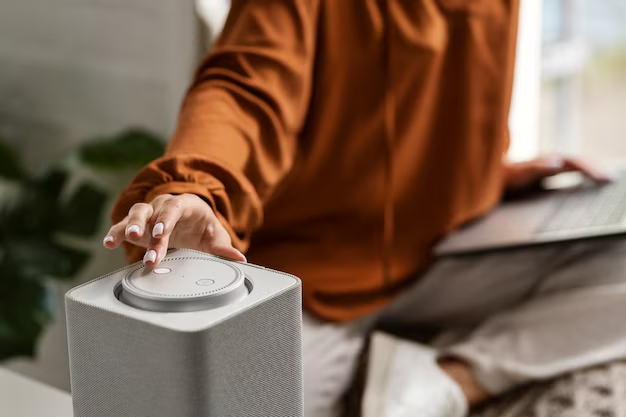Choosing the Right Generator Size for Your Furnace and Refrigerator Needs
When power outages strike, the last thing you want is a cold home and spoiled food. Investing in a generator is a smart solution, but selecting the right size can be daunting. In this guide, we'll explore everything you need to know about choosing the right generator to power your furnace and refrigerator, ensuring you're well-prepared for any emergency.
Understanding Generator Basics
Before diving into specific sizes, it's essential to grasp some generator fundamentals. A generator's capacity is measured in watts, which indicates how much power it can supply. There are two main types of wattage to consider:
- Running Watts: The continuous power a generator provides to keep appliances running.
- Surge or Starting Watts: The brief power boost needed to start motor-driven appliances, like refrigerators.
Furnace Power Requirements
To determine the size of the generator required for your furnace, you need to know its wattage demand. Furnaces typically require:
- Running Watts: A standard gas furnace usually requires about 600 to 1,200 watts.
- Starting Watts: This could be around 1,600 to 2,400 watts, given the initial power surge when the furnace starts.
Refrigerator Power Requirements
Refrigerators also have specific power needs:
- Running Watts: Generally, refrigerators need between 100 and 800 watts.
- Starting Watts: You might need around 700 to 1,200 watts for the initial startup.
Calculating Required Generator Capacity
To find the total wattage your generator needs, you should add up both the running and starting watts for each appliance. It's typically advised to consider the higher starting watt requirement because this surge can significantly affect a generator's performance.
Here's a simple way to calculate:
- Add the Running Watts of all necessary appliances.
- Add the Highest Starting Watts (it’s not cumulative but depends on the largest startup power need).
Example Calculation
Let's assume you're powering a furnace and a medium refrigerator:
- Furnace: 1,000 running watts + 2,000 starting watts
- Refrigerator: 600 running watts + 1,000 starting watts
Total Running Watts: 1,000 (furnace) + 600 (fridge) = 1,600 watts
Total Starting Watts Consideration: Either 2,000 (furnace) or 1,000 (fridge) based on the higher demand
So, you would need a generator with a capacity of at least 3,600 watts to comfortably power both appliances simultaneously.
Selecting the Best Generator Type
Portable Generators
Portable generators are a versatile choice, especially for home backup solutions:
- Pros: Flexible, relatively affordable, easy to store
- Cons: Limited power, requires manual setup
Standby Generators
Standby generators are powerful solutions that automatically kick in during an outage:
- Pros: Automatic operation, high capacity, no manual setup
- Cons: Higher cost, installation requirements
Additional Generator Features to Consider
When choosing your generator, consider these features to enhance functionality and ease of use:
- Fuel Type: Common options include gasoline, propane, or diesel. Evaluate fuel availability and convenience.
- Inverter Technology: Offers cleaner power suitable for sensitive electronics.
- Noise Level: Check for quieter models, especially if neighbors are nearby.
- Run Time Capability: Longer run times mean fewer interruptions for refueling.
- Durability and Warranty: Prioritize reliability and adequate manufacturer support.
Maintenance and Safety Tips
To ensure your generator runs efficiently, adhere to these safety and maintenance recommendations:
- Regular Maintenance: Perform scheduled oil changes and check fuel lines.
- Proper Ventilation: Always operate generators in a well-ventilated space to prevent carbon monoxide buildup.
- Fuel Storage: Store fuel safely and in recommended containers; consider a fuel stabilizer to prolong gasoline life.
- Test Regularly: Start and run your generator periodically to ensure it's in good working order when you need it.
Visual Summary: Generator Selection Tips
Here’s a quick reference table with must-have tips👇:
| Tip | Details |
|---|---|
| 🔋 Calculate Wattage | Add running watts and the highest starting watts |
| 🔄 Consider Generator Type | Choose between portable and standby based on needs and budget |
| 🚨 Safety First | Ensure proper ventilation, regular testing, and safe fuel storage |
| 🔧 Maintenance | Stick to a maintenance schedule for longevity |
| ⛽ Fuel Type | Choose fuel type that’s accessible and convenient for you |
When is a Bigger Generator the Right Choice?
While it might be tempting to buy the smallest and cheapest generator that can just meet your needs, consider scenarios where you might need a bigger generator:
- Future-Proofing: Expect changes in energy demand by planning for additional or upgraded appliances.
- Additional Needs: Consider other critical systems like water pumps or security systems.
- Enhanced Stability: A larger generator can handle unexpected overloads without issue.
Final Thoughts
In the quest to find the perfect generator for your furnace and refrigerator, understanding the combined wattage requirements and anticipating additional needs are key. Armed with this knowledge, you're better positioned to choose a generator that offers reliability, performance, and peace of mind, keeping your home comfortable and your food safe during power outages. Remember, an informed decision today prepares you for the uncertainties of tomorrow.
